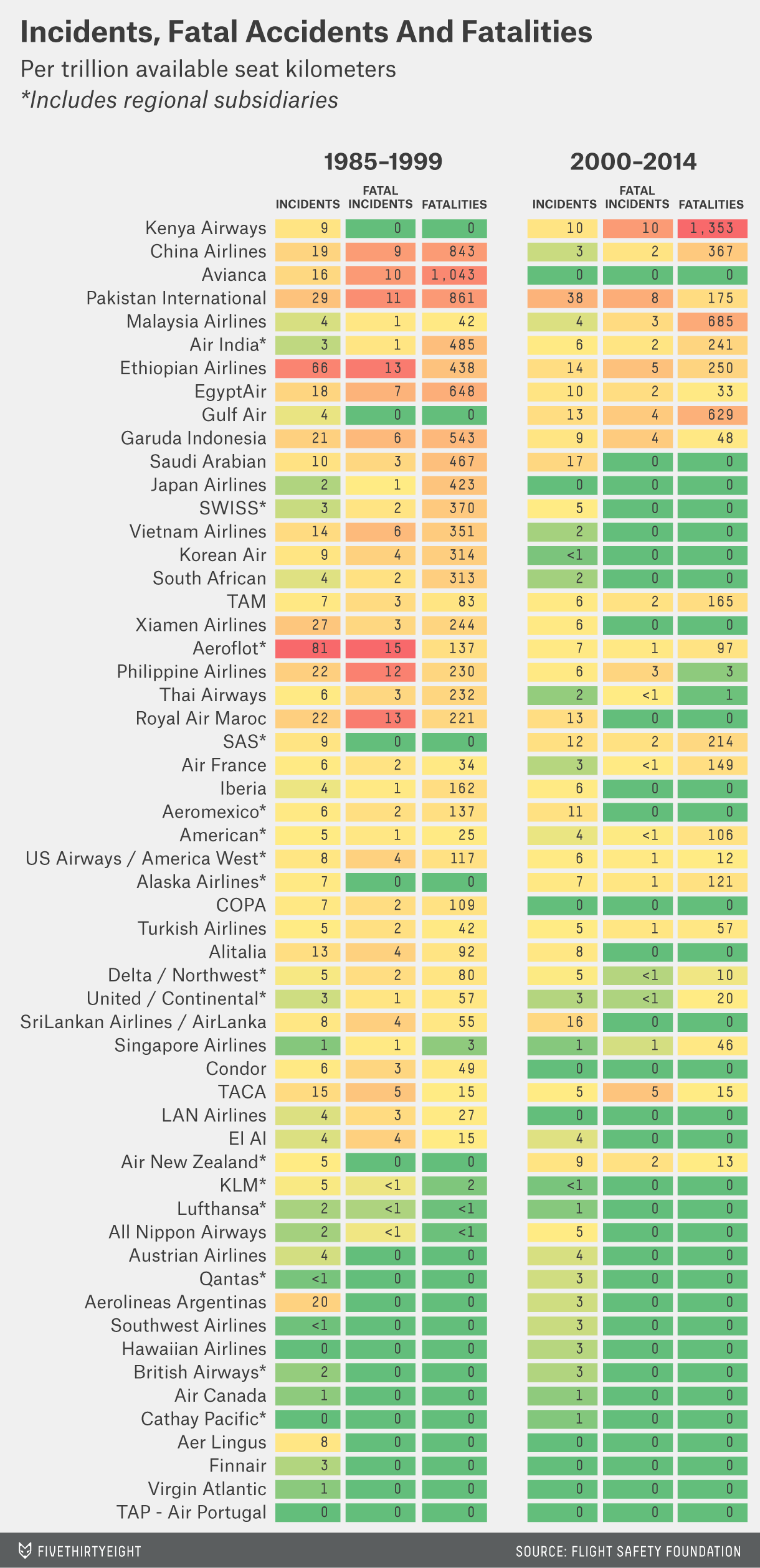Question
The data set that I chose is asking the question: Should travelers avoid flying airlines that have had crashes in the past? This data set
The data set that I chose is asking the question: "Should travelers avoid flying airlines that have had crashes in the past?"
This data set compares the safety records of major commercial airlines over the past 30 years including all crashes, whether or not the cause is known. In looking at the top 56 airlines globally, there is little consistency in any major airlines when it comes to crashes. For example, Avianca (major carrier for Columbia) had multiples crashes in the early 1990's, but has had zero crashes since. Also, Kenya Airlines had zero crashes until 2000, but has since has multiple incidents.
The data trend appears to show that when travelers look at an airlines track record for crashes, they can infer the possibility of future crashes. A better way for travelers to view the trend of this data set is to view the data on airlines from developing countries. Travelers insistent on minimizing risk should avoid flying airlines from developing countries.
After researching the data, I would make the claim that a two-tailed test would be needed to be able to show both above and below the mean number of crashes for major commercial airlines.What would be my null and alternative hypothesis? Or how would I get this information?

Step by Step Solution
There are 3 Steps involved in it
Step: 1

Get Instant Access to Expert-Tailored Solutions
See step-by-step solutions with expert insights and AI powered tools for academic success
Step: 2

Step: 3

Ace Your Homework with AI
Get the answers you need in no time with our AI-driven, step-by-step assistance
Get Started


